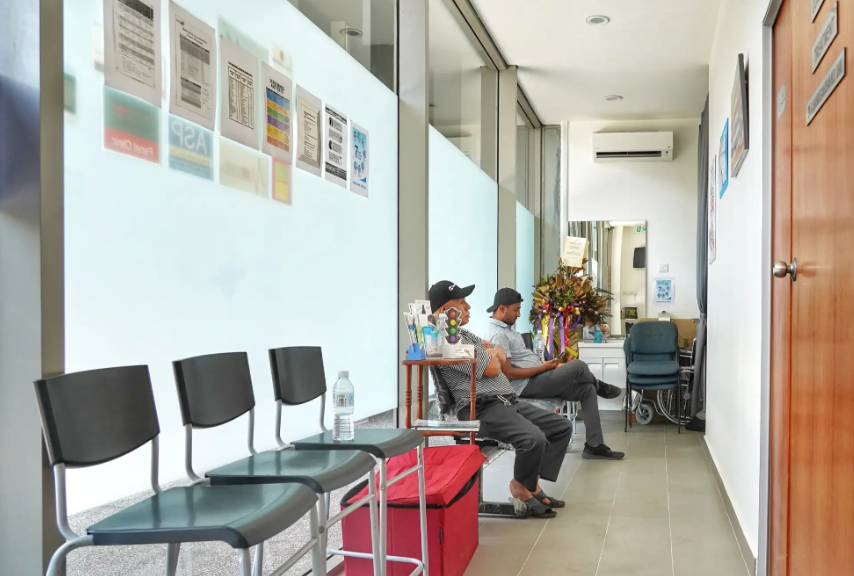- Semaglutide and tripeptide are the two most commonly prescribed GLP-1 receptor agonists used for treating type 2 diabetes and weight loss.
- Drugs GLP-1 have been previously linked to the possibility of blinding eye conditions.
- Adults with diabetes who take any GLP-1 medicine may be at increased risk of neovascular age-related macular degeneration (nAMD), a recent study suggests.
About one in eight people have taken a glucagon-like peptide-1 receptor agonist or GLP-1 drug, new tracking surveys have found.
These drugs were originally developed to treat type 2 diabetes, but in recent years they ‘ve become increasingly popular for weight loss.
At present, semaglutide (marketed under the brand names Ozempic (for type 2 diabetes and Wegovy for weight loss) and tirzepatide (marketed under the brand names Mounjaro (for type 2 diabetes and Zepbound for weight reduction) are the most commonly used GLP-1 medications.
GLP-1 medicines have potential risks and side effects just like every other treatment. In July 2024 a study reported that semaglutide patients had a fourfold increased risk of non-arteritic anterior ischemic optic neuropathy (NAION), which was the first indication of one such side effect. In January 2025 a study reported that those taking tirzepatide or semaglutide may be more likely to develop vision problems that could lead to blindness(Trusted Source).
Older patients with diabetes who take any form of GLP-1 treatment may also be at greater risk of neovascular age-related macular degeneration (nAMD), a recent study in the journal JAMA Ophthalmology suggests.
Paying attention to semaglutide
The researchers analyzed the medical records of nearly 139, 000 residents of Ontario with diabetes (adjusted for average age 66) from 2020 to 2023. People who had taken GLP-1 medications for more than six months did so, researchers say.
“All GLP-1 receptor agonists prescribed in Ontario, Canada between November 2000 and March 2001 were included in the analysis; no category of GLP-1 agonists was excluded, ” Medical News Today was explained by the leading investigator of the study, Rajeev H. Muni, MD, MSc FRCSC, associate professor and vice chair of clinical research in the University of Toronto’s Department of Ophthalmology and Vision Sciences in Canada. But semaglutide represents 97. 5% of all GLP-1 prescriptions – the vast majority of use in our study sample.
The remaining 2. 5% was lixisenatide (Trusted Source), and nearly all lixisenatide prescriptions went with insulin glargine (Trusted Source). “Tirzepatide was excluded because at the time of the trial it had not received Canadian approval, ” Muni said.
Moreover, he added, “Our study included patients with diabetes between 2020 and 2023 though Wegovy was licensed at the end of 2021. ” “In this respect it is quite probable that the semaglutide used in our study was prescribed as Ozempic, which is a medication recommended for blood sugar control in type 2 diabetic patients.
GLP-1 use in older persons is twice as risky.
After analysis, researchers found that people with diabetes who took a prescription for GLP-1 had twofold higher risk of developing nAMD, a form of AMD in which fluid drains into the macula of the eye due to abnormal blood vessels forming beneath the retina.
Because it ‘s a disorder that can cause blindness, AD is now incurable.
More than half of all people with diabetes aged 66 years and older who had never used GLP-1 receptor agonists experienced nAMD compared to about 2 per 1,000 of those exposed for at least six months, Muni said. “This is a relative doubling in the danger, but still a very small absolute risk, ” Muni said.
“We want to raise awareness in clinical practice about what we have found, but it should not be a cause for alarm, ” he said. “The safety and efficacy of these drugs for metabolic, renal, and cardiovascular health have already been established. “But people who are likely to have AMD but are not affected by it, such as elderly people, need to be careful about the risk of new problems with their eyesight. “People should say right away to their doctor if they see any signs of new problems with eyesight while taking these drugs, and should be referred to an ophthalmologist for additional assessment, ” he said.
Limitations of the study
MNU also held a further discussion with Demetrios Vavvas MD, PhD, director of the retina service at Mass Eye and Ear in Massachusetts.
But its real strength, Vavvas said, is the way it took such heavily real-world data, used a well-established statistical approach and proven that it found a “dose-response” association.
“The longer a patient was treated with the medicine, the greater the likelihood of developing nAMD, ” the professor added. “This kind of trend provides a very strong signal that requires careful follow-up research, and strengthens a possible connection more than just one out of 100 showing. ”
Vavvas did, however, draw attention to the study’s shortcomings.
“Secondly, surveillance bias could affect the outcomes, ” Vavvas said. As a likely outcome, doctors will pay attention more closely to patients who begin a new high-potency drug – such as a GLP-1 RA – and thus would be more likely to identify and thus correct their eye problems, giving them the impression that the risk of developing this disease has increased.
Still, despite statistical adjustments, “the actual incident rates were very low — less than 0. 2% of the time, so results may not be accurate, ” he said. The results may not apply to patients taking these drugs in the real world, he added, particularly those with more complex health profiles because most GLP-1 RAs in this study were semaglutide, he said. In addition, the analysis did not consider more than 26, 000 patients who could not be matched.
Eye health monitoring is crucial when taking GLP-1 medications.
BY MNU The director of optometric and refractive services at Gordon Schanzlin New Vision in La Jolla, California David I. Geffen, OD, FAAO was contacted about this study.
The doctors have to be very careful as well to make sure that patients’ eyes are not put at risk when they take GLP-1 medicines because most of these medications are prescribed to many people and there are reports that some patients may not be totally symptom- or side-free.
“Our role must therefore be to make sure we are aware that our patients are using these drugs, ” he said. “The study shows that, when new drugs are licensed, caution is necessary because we may not know about the long-term consequences of the drug. “
“Many of our patients are on GPL-1s because diabetes is fairly common in our practice, ” Geffen said. “We need to look at diabetic patients with great care — it’s much more important when you’re taking these drugs. When you make the choice to use these medications, one study is not enough to make too many conclusions. For most patients, the GLP-1 drugs have shown many benefits.
“It would be helpful to have continued studies in other countries to see if this also occurs in other populations, ” he said. “Many more demographic characteristics of the affected populations would be useful for safety profiling. Knowing the condition of the retina in the individuals before they are administered the medications would help determine safety profiles.




